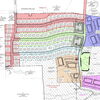Processing Your Payment
Please do not leave this page until complete. This can take a few moments.
- News
-
Editions
-
- Lists
-
Viewpoints
-
Our Events
-
Event Info
- Women's Leadership Forum 2025
- On the Road with Mainebiz in Bethel
- Health Care Forum 2025
- On The Road with Mainebiz in Greenville
- On The Road with Mainebiz in Waterville
- Small Business Forum 2025
- Outstanding Women in Business Reception 2025
- On The Road with Mainebiz in Bath
- 60 Ideas in 60 Minutes Portland 2025
- 40 Under 40 Awards Reception 2025
- On The Road with Mainebiz in Lewiston / Auburn
- 60 Ideas in 60 Minutes Bangor 2025
Award Honorees
- 2025 Business Leaders of the Year
- 2024 Women to Watch Honorees
- 2024 Business Leaders of the Year
- 2023 NextUp: 40 Under 40 Honorees
- 2023 Women to Watch Honorees
- 2023 Business Leaders of the Year
- 2022 NextUp: 40 Under 40 Honorees
- 2022 Women to Watch Honorees
- 2022 Business Leaders of the Year
-
-
Calendar
-
Biz Marketplace
- News
- Editions
- Lists
- Viewpoints
-
Our Events
Event Info
- View all Events
- Women's Leadership Forum 2025
- On the Road with Mainebiz in Bethel
- Health Care Forum 2025
- On The Road with Mainebiz in Greenville
- On The Road with Mainebiz in Waterville
- + More
Award Honorees
- 2025 Business Leaders of the Year
- 2024 Women to Watch Honorees
- 2024 Business Leaders of the Year
- 2023 NextUp: 40 Under 40 Honorees
- 2023 Women to Watch Honorees
- 2023 Business Leaders of the Year
- + More
- 2022 NextUp: 40 Under 40 Honorees
- 2022 Women to Watch Honorees
- 2022 Business Leaders of the Year
- Nomination Forms
- Calendar
- Biz Marketplace
Proposed 300-foot cell tower near Rangeley draws criticism after earlier failed attempt
 Courtesy / Maine Land Use Planning Commission
A satellite image shows the location of a proposed 300-foot-tall cellphone tower, in Dallas Plantation, near Rangeley Village. Saddleback Mountain, not shown, is about 6 miles to the east of the tower site.
Courtesy / Maine Land Use Planning Commission
A satellite image shows the location of a proposed 300-foot-tall cellphone tower, in Dallas Plantation, near Rangeley Village. Saddleback Mountain, not shown, is about 6 miles to the east of the tower site.
A proposal to erect a 300-foot-tall cellphone tower in rural Franklin County gets a public hearing Tuesday after six months of planning — and two years after a proposal for a smaller tower there failed.
The Maine Land Use Planning Commission is scheduled to receive testimony in a hearing on the new project, which would construct the tower and a half-mile access road in Dallas Plantation, about 5 miles east of Rangeley.
Portland-based Rising Tide Towers LLC hopes to build the lighted, lattice-style structure under contract with AT&T Inc. and the federal FirstNet program, a $40 billion initiative to expand wireless telecommunication networks for use by first responders. Maine joined the effort in 2017, and the program soon identified a “significant gap in service coverage” in Dallas Plantation.
But in October 2019 the commission rejected Rising Tide’s initial attempt to site a 190-foot-high tower on a nearby parcel of land, saying the structure was incompatible with local residential zoning. Both that site and the new one are leased from a local landowner, Mark Beauregard.
The LUPC, a division of the state’s Department of Agriculture, Forestry and Conservation, oversees planning for over 10 million acres of unorganized territories in the state, including Dallas Plantation.
In March, Rising Tide returned to the commission with a new approach — siting the tower in a different zone that wouldn’t require the structure to be compatible with residential uses.
But while the original site was on Dallas Hill, at an elevation of 2,013 feet, the new location is 150 feet lower. To provide the necessary wireless coverage at that level, Rising Tide and AT&T say, the proposed tower must now be at least 300 feet tall.
The original plan drew sharp criticism from area residents, and the new one seems to have attracted its own share of negative reaction.
In May, the commission said it had received 24 public comments in response to the proposal, and all but two were opposed to it. Among the concerns cited was the visual impact of the structure and its aircraft-warning beacon, which would flash at night.
Since May, other comments have echoed the original criticism.
“The previous plan was rejected because the project was located too close to residential and recreational property. It appears to me that the new location is not significantly different from the last plan. The adjustments really make no significant, practical difference from the rejected Site,” wrote one Dallas Plantation resident, John Margolis, in public comments to the LUPC.
The commission hearing is scheduled for Tuesday at 6 p.m., at the Sugarloaf Mountain Hotel, in Carrabassett Valley. The commission will also accept written comments through Sept. 17.
More information can be found here.










0 Comments